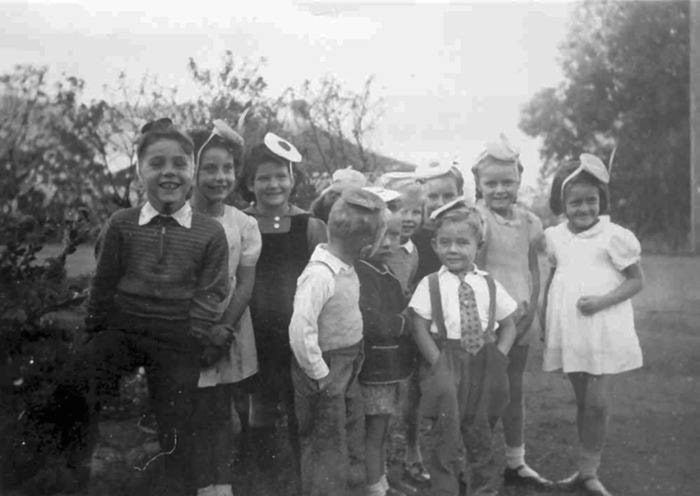Throughout its 108-year history, Ladysmith has had a number of neighbourhoods — “Finn Town,” “Little Italy” and “Belgian Town” are just a few of the many ethnic groups that lived and worked in the area.
Beginning in the early 1900s, more than 30 families of Scottish descent settled on the south side of Ladysmith centred around Bayview Road. Most of them attended the Presbyterian (later United) Church on High Street.
Like generations of Scots before them, a staple part of their diet was porridge, traditionally made from “groats” — oats with the husk removed. Originally, the grain was ground into coarse flour, although later generations had their oats either “rolled” or “steel cut.” This was then cooked for breakfast into a kind of “mush” — hence the nickname for the neighbourhood: Mush Alley.
Being frugal Scots, porridge that was not consumed at breakfast was scraped out of the pot after it cooled and molded into a loaf. The loaf was cut into slices and fried with a bit of fat or butter, sprinkled with brown sugar and served at noon or even supper.
Mush Alley was a true community. The majority of its residents belonged to a common ethnic group representing several generations. Most of the children attended the same schools in Ladysmith and many of the men in the community worked in the mines or, in later years, at the mills or logging camps in the area. Women looked after other children so that they could contribute to the family income by canning and selling their home preserves or holding part-time jobs “over town,” as they referred to the rest of Ladysmith.
Mush Alley had another nickname: Teacher Row. More than 15 teachers lived in the area between 1920 and 1965. For example, in 1938 a group of five teachers led by Ron Grantham moved out of the Travellers Hotel and rented the Crucil family home at the end of Bayview. They hired a housekeeper to clean and cook and lived in a quiet area of town — all for less money than their former hotel rooms.
After the Island Highway was re-routed in the late 1930s, the Johnson family relocated their business to Bayview Road. The store quickly became, according to Colleen (Clarkson) Davis, “the hub of our community.” Mush Alley alumni recall operating the gravity-fed gas pumps (“full tank $2”), buying treats (“pop $0.06 and chocolate bars $0.05”) and watching KVOS programs on one of the first TV sets in the area. Locals gathered at the store to share opinions on everything from TV soaps and hockey scores to election results.
On July 31, 2004, a Mush Alley reunion organized by Eilene Bayer, Donna Laffin and others was held on the property of Alice Galloway. The Galloway family was one of the first families to settle in the area, and to many residents, Alice was the heart of Mush Alley. The reunion was extremely successful, with more than 50 adults and many children in attendance.
Although the formal reunion was a one-day celebration, the participants were invited to both share and record their memories of Mush Alley life. In reading through these memoirs, and while interviewing some of the key participants, this writer discovered many common memories. Everyone, for example, could remember what he/she was doing on Sunday morning on June 23, 1946 when a 7.3 earthquake occurred with an epicenter near Forbidden Plateau. The Findo home fire in 1949 and Gardner’s oil truck crashing into the Rodger’s house were other examples. Others recall the never-ending games of “kick the can,” stealing cherries or selling collected beer bottles to Mr. Smith. Although part of the Island Highway, Bayview Road was also the best place for roller skating, doing bike tricks and playing baseball or soccer. As Rob Johnson, who still lives on Bayview, told the writer, “Traffic was never heavy, and drivers very tolerant of kids playing on the road.”
Many memories of Mush Alley centered on holidays. Pioneer resident Jack Rodgers always fired two rifle shots on New Year’s Eve and gave the Address to the Haggis on Robbie Burns Day — even when he was in his late 80s. On Halloween, an essential trick or treat stop was at Mrs. Higson’s for candy apples. Of course, “snow days” were just like a holiday, when the Galloways, Brownes, Ulinders and every other neighbourhood kid would get out their sleighs for a trip down Ryan’s Alley. During the summer, the Mush Alley gang would spend the day at Transfer Beach. As there were no coolers back then, picnic lunches were kept in the shade under the Transfer Wharf (and Beryl Thornley to this day insists potato salad isn’t properly made unless it smells of creosote!)
For the adults, a favourite pastime was the making of concrete. Alice Galloway, in her Mush Alley memories, wrote “my husband (Jim) was always mixing concrete. When he had completed the forms and was ready to pour, he didn’t have to ask for help — everyone was there at his side in the morning.” While the women prepared a community lunch or supper, Jim would be joined by Earl Johnson, Don Mckay, John Ulinder, Kermit Thornley, etc., to finish the driveway or retaining wall at one of their homes.
All of the Mush Alleyites I interviewed claimed that it was a wonderful place to grow up. There were many marriages between the local families, and a number of them continue to reside in the area today.
Perhaps the spirit of Mush Alley is best expressed by Alice Galloway: “In those days when people had steady employment, they didn’t move around, so the young people formed many close, lasting, friendships. It was a pleasant, peaceful life where most lived in harmony without a worry about safety or security. Everyone seemed to have a sense of belonging, so you were not alone.”
— Ed Nicholson, Ladysmith Historical Society
